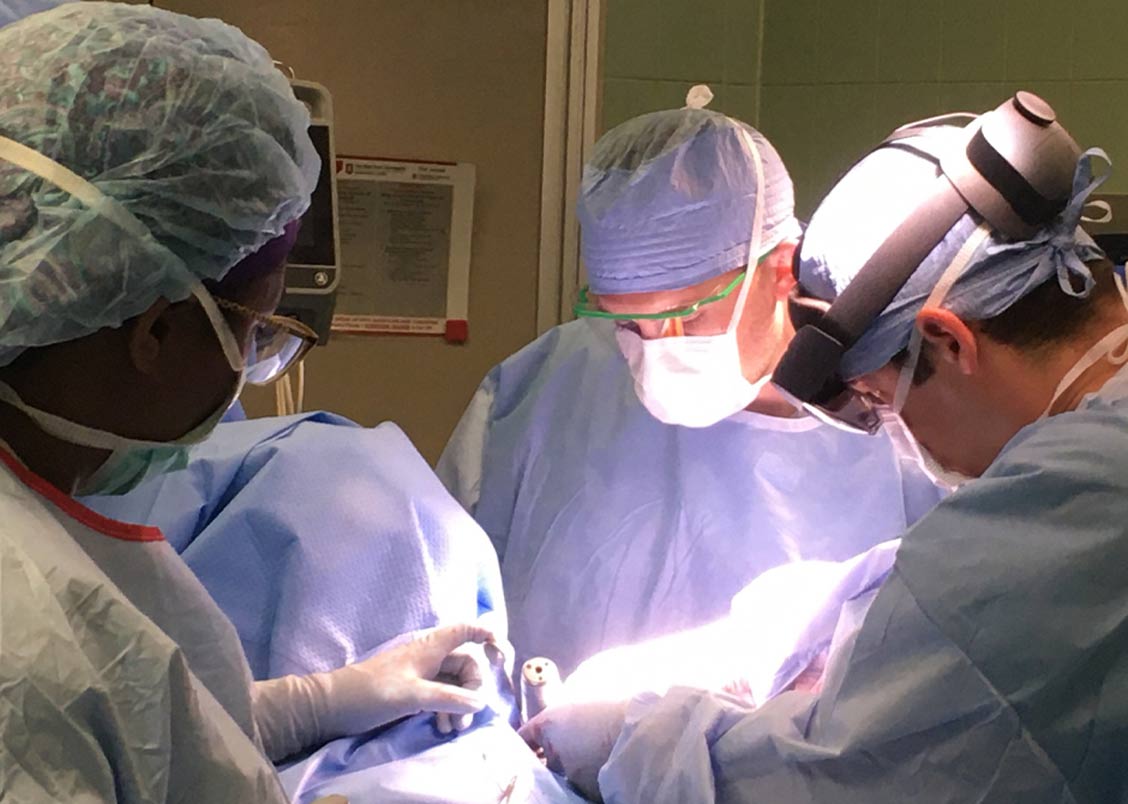Nonsurgical Treatments
-
Osteopathic Manipulation
-
Injection Therapy
-
Lifestyle Modification
The Ohio State Sports Medicine team evaluates and treats a broad range of orthopedic shoulder and elbow injuries. These injuries occur in the young and the elderly, as well as in people with active or sedentary lifestyles. And traumatic shoulder injury can often lead to arthritis in the long term and other short term issues with the rotator cuff and labrum (cartilage in the shoulder). Throwers, commonly referred to as throwing athletes or upper extremity athletes, can have unique and complex problems involving the shoulder and elbow. In addition to the problematic joint, it is critically important to treat the entire athlete – including hip, trunk, back and core muscle groups.
The majority of shoulder and elbow injuries respond to a nonsurgical approach, such as anti-inflammatory medications, icing, rest, physical therapy, a sling or brace. If matters worsen, surgery might be a solution to consider. The recovery period for a shoulder injury after surgery ranges from three to six months.
The cost of surgery varies by procedure. Please call 614-293-2663 to schedule an appointment with an orthopedic surgeon near you to discuss treatment options and costs.

The Ohio State University Wexner Medical Center is the first in Ohio to successfully perform shoulder replacement surgery using a mixed reality 3D hologram. Dr. Greg Cvetanovich, orthopedic surgeon and shoulder specialist, performed the procedure today.
Brooke was a synchronized swimmer at The Ohio State University and is currently a physician assistant at Ohio State Sports Medicine. Here she shares the care she received for her shoulder pain and how everyone is treated with the utmost quality of care regardless of who you are.
Christine suffered from a series of shoulder dislocations that inhibited her from playing softball, and other interests. A surgeon at Ohio State Sports Medicine used the laterjet procedure to solve her dilemma. Christine shares why she recommends The Ohio State University for injured athletes.
A debilitating rotator cuff tear left Jean unable to do many of the daily activities she enjoyed, from general taking care of her family to the annual hosting of holiday dinners. She shares how the sports medicine specialists at The Ohio State University Wexner Medical Center helped her get back to activity.
Kim was looking forward to an active lifestyle as she entered retirement. After a failed shoulder surgery had sidelined that dream, Kim discovered orthopedic surgeon Julie Bishop, MD, at The Ohio State University Wexner Medical Center. Here, Kim tells her story and how surgery at Ohio State has allowed her to continue living an active life and enjoy retirement.
Mitch shares the story of his first shoulder surgery that didn't go as planned and his journey to finding Dr. Bishop who did his revision surgery which now gives him the ability to do what he loves. Finding the right doctor when you are in need makes all the difference, Mitch wishes he would have found that at Ohio State the first time around.
If you need home medical equipment, such as a specialized brace or sling, it’s easy to obtain quickly through Ohio State Home Medical Equipment (OSHME).
A joint venture between Ohio State Health Inc. and DASCO Home Medical Equipment, OSHME has staff and supplies on hand for patients of The Ohio State University Wexner Medical Center. To learn more about available equipment, place an order or talk to an equipment specialist, visit godasco.com.